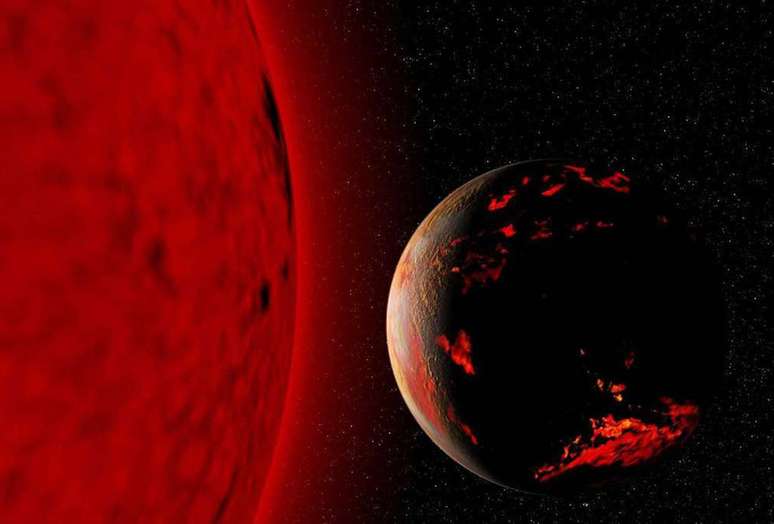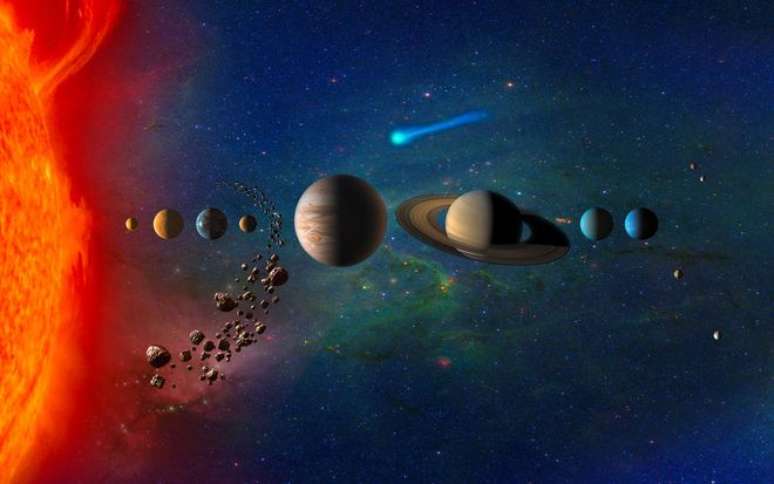The researchers analyzed the effects that an “orphan” star would cause in the Solar System if it were 100 astronomical units away from our star. learn more
What would happen if a orphan star get closer to the Solar System? To find out, researchers led by Sean Raymond, astronomer at the Bordeaux Astrophysics Laboratory, analyzed the possible consequences if a star was 100 astronomical units from the Sun.
- Asteroid 319 Leona will occult the star Betelgeuse in December
- Learn more about the planets of the Solar System with these curiosities
The Solar System formed about 4.5 billion years ago and today has a stable configuration with planets orbiting the Sun. However, this calm will not last forever: our star will continue to evolve and, in a few billion years, it will become a red giant which will swallow the nearest planets, including Earth.

In this same range there is a 1% chance of encountering an orphan star. Stars are usually gravitationally bound to their galaxies and travel through space following the movement of their surroundings. But sometimes something can disturb them and break that connection, for example if the star gets too close to another star. Black hole supermassive, it can be kicked out of your system.
Most of these wandering (or intergalactic, if you prefer) stars move on trajectories that take them off-world Milky Way, without approaching Earth. For the authors, there is about a 1% chance that such a star will visit us in the next billion years, and they note that it could influence the orbits of planets.
Changes in the solar system
They analyzed these consequences in 12,000 simulations, which included the eight planets of the Solar System. Then a stray star was added and its mass was adjusted to that of stars in our stellar vicinity. “If the star moves within 100 astronomical units of the Sun, there is still a high probability that all eight planets will survive,” they noted.

What happens if one of the planets is lost? In this case, the simulations showed different results: Mercury would be the most vulnerable and could collide with the Sun. Other results showed collisions between Earth and Venus, Neptune and Uranus would be ejected, and one even pointed out that only Earth and Jupiter could survive – and, in the worst case scenario, all planets would be ejected.
The simulations also revealed a curious result, in which Earth would be captured by the passing star. In this case, the star would be slightly less massive than the Sun and would travel at a relatively slow speed. The Earth would leave the Sun and end up running away with the star, and the other six planets in our system would fall into the Sun; the only survivor would be Jupiter.
Fortunately, the chances of a star appearing and causing so many changes in our vicinity are quite low – and even if that happened, the planets would most likely survive in slightly different orbits. “Despite the diversity of potential evolutionary paths, the odds are high the current situation of our system will not change“, they concluded.
The article with the results of the study has been published in the repository arXivwithout peer review.
Source: arXiv; Through: Universe today
Trends on Canaltech:
- Bradesco bankruptcy causes customer balances to disappear this Monday (27)
- 🤑 COUPON | Galaxy S23 Ultra at one of the lowest prices ever seen
- Remember Sarahah? The creator launches the new social network Jornali
- The model created by AI earns up to R$50,000 per month in Spain
- 🚨WITH TOAST | Buy Galaxy Tab S9 FE at an unmissable price
- Bradesco fixes the missing error with customers’ money
Source: Terra
Rose James is a Gossipify movie and series reviewer known for her in-depth analysis and unique perspective on the latest releases. With a background in film studies, she provides engaging and informative reviews, and keeps readers up to date with industry trends and emerging talents.


![Plus Belle La Vie Adher: Samuel Sinks in Dependence … which Waiting Week Week June 30 to July 4, From July 4, 2025 [SPOILERS] Plus Belle La Vie Adher: Samuel Sinks in Dependence … which Waiting Week Week June 30 to July 4, From July 4, 2025 [SPOILERS]](https://fr.web.img3.acsta.net/img/1a/22/1a22472edaf32afa3208eb860ffaa28b.jpg)

![We belong to us in advance tomorrow [SPOILERS] We belong to us in advance tomorrow [SPOILERS]](https://fr.web.img6.acsta.net/img/cf/a1/cfa1391eb4d36d534fd3041a8f95f8f5.jpg)


